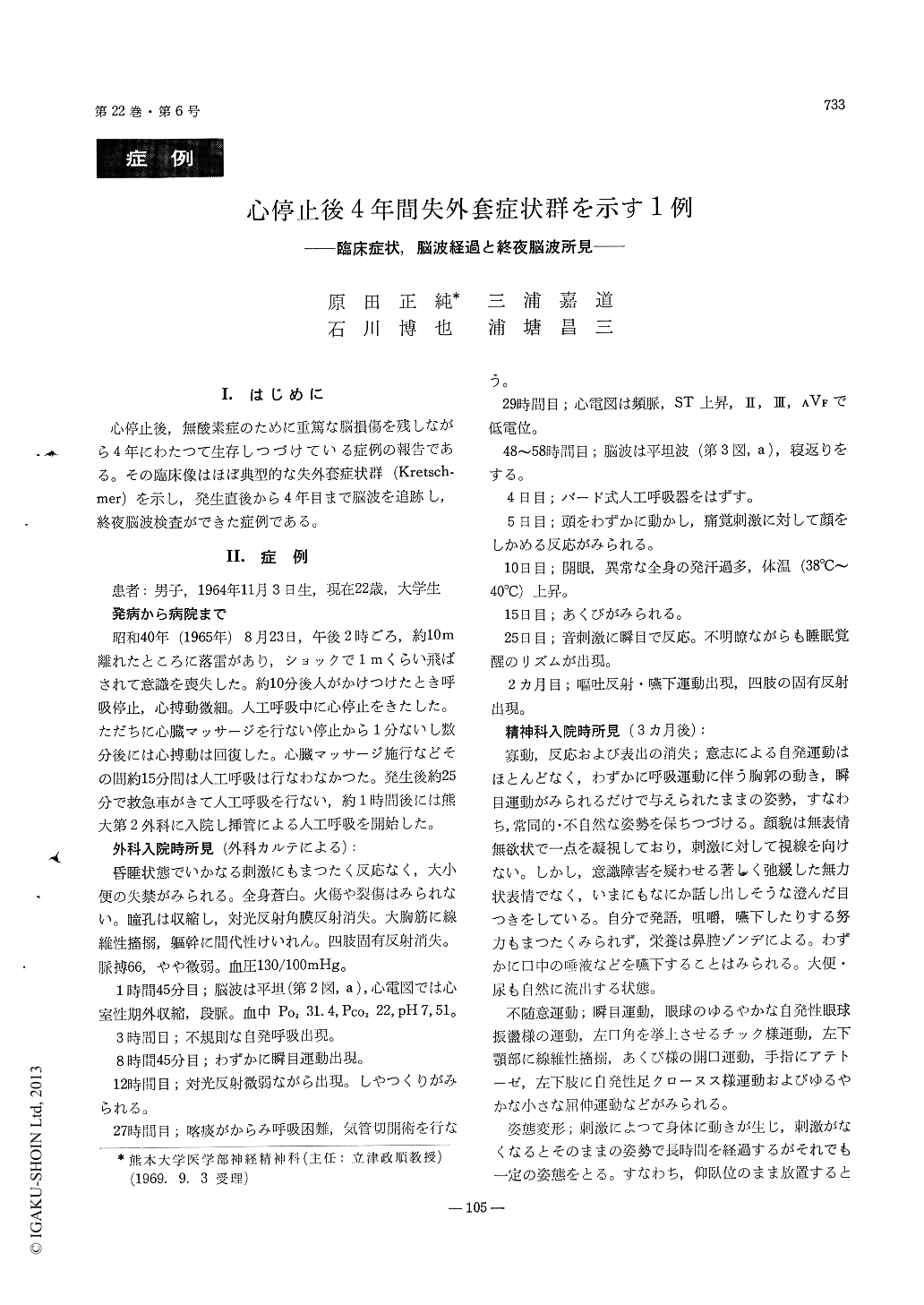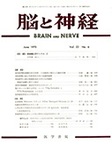Japanese
English
- 有料閲覧
- Abstract 文献概要
- 1ページ目 Look Inside
I.はじめに
心停止後,無酸素症のために重篤な脳損傷を残しながら4年にわたつて生存しつづけている症例の報告である。その臨床像はほぼ典型的な失外套症状群(Kretsch—mer)を示し,発生直後から4年目まで脳波を追跡し,終夜脳波検査ができた症例である。
A case of a 22 year-old male with cerebral anoxia from cardiac arrest who has survived for 4 years since the accident was reported.
1) The patient suffered cardiac arrest by the shock of the falling of a thundervolt. Closed cardiac Mas-sage and artificial respiration were done immedi-ately. Therefore, the time of the cardiac arrest was for one minute and respiratory arrest was for 15 minutes. The patient remained in deep coma even after the restoration of the heart beat and respira-tion.
2) The clinical symptoms, which has remained almost the same until now, are akinesia, mutisumus, disappearance of effect, deformity of posture, pri-mitive reflexes, chorea, athetosis, pyriamidal signs and disturbances of vegetative nervous. His clinical figure is precisely similar to the apallic syndrome.
3) In one hour and 45 minutes after the accident, flat EEG was observed. After 20 hours, EEG was getting better and low voltage θ wave appared diffusely. After 48 hours, flat EEG was showed again. For 14 days to 30 days, EEG was not con-stant ; flat EEG or low voltage irregular slow ac-tivity was observed. After that, low voltage fast wave and θ wave were showed. After 2 years, a wave was faintly observed.
4) After 3 months, sleep EEG was distinguished diffuse θ wave stadium (Sleep 1) from flat EEG stadium (Sleep 2). After one year, diffuse θ wave stadium (Sleep 1), diffuse slow a rythm activity stadium (Sleep 2) and low voltage stadium (Sleep 3) were observed. After 2 to 3 years, EEG of deep sleep stadium (Sleep 3) showed low voltage δ, wave. Spindle, humb and K-complex are not yet recong-nized in sleep EEG. The paradoxical sleep phase has been present ever since 3 months after the accident.

Copyright © 1970, Igaku-Shoin Ltd. All rights reserved.


